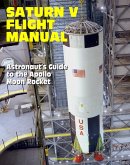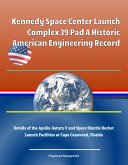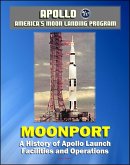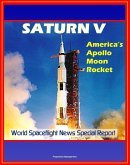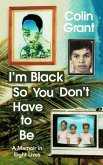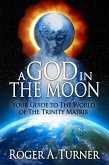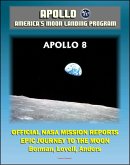This is the autobiography of John P. Hornung, a rocket scientist during the early years of NASA's Apollo Mission to the moon. The writing describes four chapters in his life. Three of them were selected for their significance in U.S. history; early school integration in the deep south, a period of brutality in the US Marine Corps, and landing a man on the moon. A fourth chapter includes short stories of John's Sea Scout adventures.
Chapter 1 - The Silent Aftermath
In the mid 1950s, a battle bubbled to the surface between a group of Catholic intellectuals, intent on removing segregation in New Orleans Catholic schools, and their formidable segregationist foes. In the battle's aftermath was a wake of difficult challenges my family had to face. This is the account of the attempt to understand the consequences of this epic struggle. The story begins with the description of the Hornung sibling's unusual childhood and the puzzles that surrounded it. More than fifty years later, the Silent Aftermath unraveled shocking discoveries of the mystery behind the difficulties we siblings encountered and the battle to integrate New Orleans Catholic schools.
Chapter 2 - Abandon Ship!
Here is a collection of short stories of my teenage adventures in the Sea Scouts. The stories include: a harrowing attempt to survive a severe storm at sea; an unusual way of winning first place in a Boy Scout District Camporee; an encounter with the US Army; and what it was like to attend a colorful Boy Scout World Jamboree. While being adventurous and fun loving, we took our seamanship seriously and met challenges in a responsible manner. These stories are filled with wit and humor. Every time I read these adventures I laugh out loud. Maybe you will too.
Chapter 3 - Private 1543868
I enlisted in the U.S. Marine Corps in my junior year of high school. While I found my platoon's experiences during Marine Corps boot camp to be brutal at times, I learned a half century later they were the dark side of Marine Corps life. Although recruits experienced the blunt force of the dark side, they and the public were not aware how entrenched it was from the 1950s thru the mid 1970s. This came to light only after I read the book "see Parris and Die Brutality in the U.S. Marines", while researching material for this chapter. This is the story of my encounter with the dark side and my attempts to survive it.
Chapter 4 - To the Moon without Me
After I graduated from college in 1963 I was hired by the Chrysler Corporation Space Division. The company constructed the first stage of NASA's Saturn IB Space Launch Vehicle at NASA's Michoud Rocket Plant in New Orleans, Louisiana. Eventually, I became a Reliability Engineer working in an organization that was the first to develop the mathematics and techniques of Artificial Intelligence. This technology was applied to deciphering the weak points in the Saturn IB rocket's design.
The Saturn IB was critical to achieving the goal of landing a man on the moon and returning him to earth because it was NASA's workhorse in testing components of the giant Saturn V and its payload to the moon. It launched and tested the Saturn V's third stage the Saturn IV-B, the Apollo spacecraft, the Saturn's brain, and the lunar lander. The testing culminated with the Saturn IB's launch of Apollo 7, the first manned Apollo spacecraft. With the very next mission, Apollo 8, the Saturn V headed to the moon.
In this chapter I write; of what I did after discovering that imaginary numbers were missing, of an incident that may have led to my arrest, of my attempt to discover what went wrong during a critical test of the Saturn IB's superstructure, of the little known facts surrounding the fire atop Saturn IB 204 which killed three astronauts, and, of the unseen test flights of the Saturn IB. This is the story of my exciting and demanding career in the race between the United States and the Russians to be the first t...
Chapter 1 - The Silent Aftermath
In the mid 1950s, a battle bubbled to the surface between a group of Catholic intellectuals, intent on removing segregation in New Orleans Catholic schools, and their formidable segregationist foes. In the battle's aftermath was a wake of difficult challenges my family had to face. This is the account of the attempt to understand the consequences of this epic struggle. The story begins with the description of the Hornung sibling's unusual childhood and the puzzles that surrounded it. More than fifty years later, the Silent Aftermath unraveled shocking discoveries of the mystery behind the difficulties we siblings encountered and the battle to integrate New Orleans Catholic schools.
Chapter 2 - Abandon Ship!
Here is a collection of short stories of my teenage adventures in the Sea Scouts. The stories include: a harrowing attempt to survive a severe storm at sea; an unusual way of winning first place in a Boy Scout District Camporee; an encounter with the US Army; and what it was like to attend a colorful Boy Scout World Jamboree. While being adventurous and fun loving, we took our seamanship seriously and met challenges in a responsible manner. These stories are filled with wit and humor. Every time I read these adventures I laugh out loud. Maybe you will too.
Chapter 3 - Private 1543868
I enlisted in the U.S. Marine Corps in my junior year of high school. While I found my platoon's experiences during Marine Corps boot camp to be brutal at times, I learned a half century later they were the dark side of Marine Corps life. Although recruits experienced the blunt force of the dark side, they and the public were not aware how entrenched it was from the 1950s thru the mid 1970s. This came to light only after I read the book "see Parris and Die Brutality in the U.S. Marines", while researching material for this chapter. This is the story of my encounter with the dark side and my attempts to survive it.
Chapter 4 - To the Moon without Me
After I graduated from college in 1963 I was hired by the Chrysler Corporation Space Division. The company constructed the first stage of NASA's Saturn IB Space Launch Vehicle at NASA's Michoud Rocket Plant in New Orleans, Louisiana. Eventually, I became a Reliability Engineer working in an organization that was the first to develop the mathematics and techniques of Artificial Intelligence. This technology was applied to deciphering the weak points in the Saturn IB rocket's design.
The Saturn IB was critical to achieving the goal of landing a man on the moon and returning him to earth because it was NASA's workhorse in testing components of the giant Saturn V and its payload to the moon. It launched and tested the Saturn V's third stage the Saturn IV-B, the Apollo spacecraft, the Saturn's brain, and the lunar lander. The testing culminated with the Saturn IB's launch of Apollo 7, the first manned Apollo spacecraft. With the very next mission, Apollo 8, the Saturn V headed to the moon.
In this chapter I write; of what I did after discovering that imaginary numbers were missing, of an incident that may have led to my arrest, of my attempt to discover what went wrong during a critical test of the Saturn IB's superstructure, of the little known facts surrounding the fire atop Saturn IB 204 which killed three astronauts, and, of the unseen test flights of the Saturn IB. This is the story of my exciting and demanding career in the race between the United States and the Russians to be the first t...
Dieser Download kann aus rechtlichen Gründen nur mit Rechnungsadresse in A, B, BG, CY, CZ, D, DK, EW, E, FIN, F, GR, HR, H, IRL, I, LT, L, LR, M, NL, PL, P, R, S, SLO, SK ausgeliefert werden.



